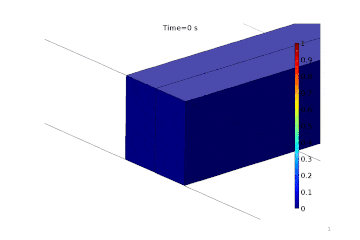Keywords
metallurgy, phase change, welding, material characterization, heat transfer
Context / Goal
In various manufacturing or assembly processes (casting, heat treatment, welding, etc.), materials are subjected to high thermal stresses, resulting in microstructural changes affecting their mechanical properties. The modeling of these industrial processes often implies a precise rheological and metallurgical characterization of materials. The main goal of this study is to describe the evolution of metallurgical phases under thermal cycles (as those encountered in pulsed laser welding) in order to predict, eventually, the state of residual stress and deformation after cooling.
SIMTEC's Achievements / Results
A simplified model is built first to characterize the temporal evolution of the different metallurgical phases on a thermal cycle illustrated below. It allows quick determination of the coefficients of the constitutive law governing the temporal evolution of each phase:
After calibration of constitutive equations (with results from literature [ROBERT07]), a three-dimensional case is handled. The evolution of the martensitic phase ( ), generated during cooling, is shown below for six laser pulses with the fusion melting point in black line and the phase fraction (
), generated during cooling, is shown below for six laser pulses with the fusion melting point in black line and the phase fraction ( ) in white line:
) in white line:
The client now has a model characterized through experimental data, able to describe the metallurgical history of the heated material and describing the formation of fusion zone (FZ) and heat-affected zone (HAZ).
References
[ROBERT07] Simulation numérique du soudage du TA6V par laser YAG impulsionnel : caractérisation expérimentale et modélisation des aspects thermomécanique associées à ce procédé, Yannick Robert, Thèse, Ecole des mines de Paris, 2007



